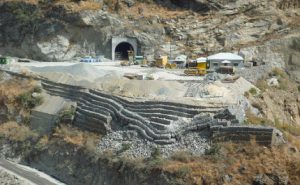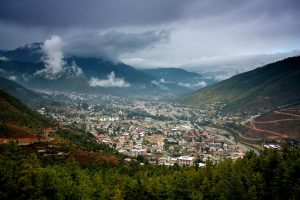 While India’s new draft data sharing policy moves to improve transparency, information on transboundary rivers will remain shrouded in secrecy.
While India’s new draft data sharing policy moves to improve transparency, information on transboundary rivers will remain shrouded in secrecy.
India’s water resources ministry has recently put up a draft data sharing policy on its website and invited public comments. While the draft has some welcome moves on sharing water flow and quality data with the rest of the world, much information on transboundary rivers will remain shrouded in secrecy.
The ministry calls the document Draft Hydro-Meteorological Data Dissemination Policy 2013 and has set March 31 as the deadline for public comments. The policy will be finalised once the comments have been taken into account, according to an official of the Ministry of Water Resources.
The ministry’s move comes on the heels of a new water resources information service (WRIS) that is comprehensive except when it comes to transboundary rivers. The service and now the policy draft have been welcomed by academics and NGOs working in the water sector. For years, they have been hampered by lack of adequate and timely data on water quantity and quality in India’s river basins. WRIS – which the ministry has set up in collaboration with the Central Water Commission and the Indian Space Research Organisation – solves that problem to a large extent. It provides live telemetry data on water flows, but once again only for rivers that do not cross India’s political boundaries. Even in the well-produced River Basin Atlas of India, which is part of WRIS, all rivers appear to start and stop at the country’s borders.
This anomaly remains in an era when the ministry swears by integrated water resources management and the need to have river basins and sub-basins (rather than administrative and political boundaries) as the unit for all development plans.
However, for the first time there is no blanket ban on providing information about the “classified river basins”, as transboundary basins are described by the bureaucrats. The draft says “classified data will be released for specific purpose/ study only and will be nontransferable.” Plus, anyone who wants this “classified data” will have to swear by a “secrecy undertaking”. Then the request for the data will go to a “classified data committee” which will have senior officials from the Central Water Commission, the water resources ministry and even the foreign ministry, though the last will be involved only if the request comes from someone outside India.
Even if someone manages to get some “classified data” after all this, the draft says, “The released classified data shall not be reproduced in any report/ publication/ Detailed Project Report (DPR), etc. Only results of analysis and inferences drawn thereof should be published.”
Himanshu Thakkar, convenor of an NGO called South Asia Network for Dams, Rivers and People, said: “It is good to see that there is no blanket ban on making public hydro-met information for the classified river basins and there is some application of mind to make some of it public. However, this is still far from sufficient.”
He wanted ten categories of data on transboundary river basins to be made public:
- Data pertaining to any “public interest” project in the basin, public interest being defined as per say the Land Acquisition Act, any project where land is compulsorily acquired.
- Data related to any project that is defined as a public project under the Right to Information Act.
- Data related to any project being defined as Category A or B1 projects for Environmental Impact Assessment (EIA) under the 2006 EIA Notification.
- Data related to any project that requires forest land.
- Data related to any irrigation, drinking water, flood control project and data related to any hydropower project as all of them are supposed to be public purpose projects. All information that is necessary for assessing and understanding cost benefit, social and environment impact assessment of hydropower projects, dams, diversions, information necessary for assessing and understanding disaster management plans including dam break analysis and such kind of information should be in public domain.
- Data related to any project or intervention that can cause significant impact on the local populations or ecology.
- Any data or information that is made available to any private developer or commercial interests.
- All information about the water flow at smaller sub basins of the classified basin should be in public domain, as this is very useful for all water related planning, decision making and analysis.
- All information shared with the neighbouring countries should be in public domain.
- Information about functioning of all transboundary cooperation projects, plans and committees should be in public domain.
Thakkar said information given by neighbouring countries to the Indian government should also be in the public domain. This, he said, was “Particularly relevant for people in terms of information related to floods, water flow and water quality etc… What is the use of flood forecasting information if it is not available to those who are in the areas that are vulnerable to flood risks that this information is pertaining to?”
Hydrologists say that in addition to actual data, the methods of data collection should also be available, so that they can check the accuracy of the methods and the data.



